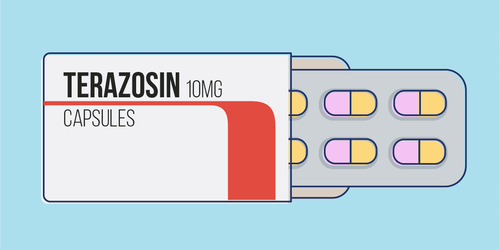This is an automatically translated article.
Article by Dr. Nguyen Khanh Hoa - Vinmec Stem Cell Research Institute and Gene Technology.SST is a hormone produced by delta cells in the duodenum and pyloric regions of the intestines, pancreas, and brain. SST has two active forms: SST-14, which is secreted from the hypothalamus, intestines and pancreas; and SST-28, secreted almost exclusively by enterocytes.
overview
In humans, the major circulating form is SST-28 and serum levels of SST-28 appear to be nutritionally regulated, increasing by a small amount following a fat challenge. SST forms bind to a family of five receptors that are all Gα-i receptors that signal via cyclic AMP (cAMP). While SST-14 binds to all the same receptors as SSTRs, SST-28 preferentially binds to SSTR5. Expression of SSTRs varies from tissue to tissue.SST is a potent inhibitor of intestinal hormone secretion, affecting GLP-1, GIP, PYY, ghrelin and other hormones. In fact, a study in healthy volunteers showed increased postprandial complete inhibition of GLP-1 and GIP serum concentrations during treatment with pasireotide (SST analogue). Furthermore, SST analogs have been used clinically to reverse the plasma levels of GLP-1 and PYY observed postoperatively. Among the five well-characterized SST receptors, SSTR5 is highly expressed in enteroendocrine cells and the selectivity profile of SST is similar to pasireotide, as well as in vitro and in vivo studies in rodents, pigs and sheep, indicates that activation of SSTR5 on the gut L cells is the likely mechanism mediating inhibition affecting GLP-1 secretion. An attractive approach is to inhibit SSTR5 to attenuate the inhibitory effect of endogenous SST on intestinal peptide secretion. Studies in preclinical models suggest that a very large increase in GLP-1 with concomitant hyperinsulinism may result from decreased inhibition of SST-14 in the human islet. It will be interesting to see if SSTR5 receptor antagonists will show clinical efficacy
Combination approach Different approaches can be combined to regulate intestinal peptide secretion and stabilize to achieve efficacy Similar results to what is possible with the gut-peptide method? A proposed combined strategy to mimic changes observed in bariatric surgery by simultaneously targeting GLP-1 regulatory nodes: an agonist for gut-local GPCRs (TGR5 or agonist). second-generation GPR40 agonist) to reduce GLP-1 secretion, an SSTR5 antagonist to blunt GLP-1 release and a DPP4 inhibitor to protect GLP-1 activity. Precisely, this approach resulted in higher levels of GLP-1 activity (100 - 400 pM) than those observed with bariatric surgery or with GLP-1 receptor agonists. Whether these increases have the same effect as those observed with the current combination of human peptide approaches remains to be determined. The Future There are still many opportunities to reverse engineer the physiology of surgery to find less invasive and more extensive treatment strategies. Furthermore, they may involve less invasive procedures, new medicinal herbs or nutritional strategies that will make effective therapies available to more individuals. A variety of new technologies will facilitate these activities. The ability to use purified ribosomal affinity translation followed by RNA and single cell sequencing in the gastrointestinal tract would provide a much deeper understanding of gut function and provide clues as to how interfere with important signals coming from the gut. A more in-depth map of the entire gut will be available over the next several years, which will help us tap into even more potential for targeted interventions. In addition, the ability to visualize ongoing neural activity in vivo and the ability to specifically manipulate neuronal populations using both designer and optogenetic receptors have revolutionized our understanding of the brain. and its targets in the brain stem. Such strategies can be applied to the enteric nervous system as well. It is hard to imagine that a better understanding of key neural signals from the gut would not lead to additional targets of intervention. Finally, we would miss the possibility of combining enteric-peptide-based approaches with therapies based on circulating hormones derived from tissues other than the gut. For example, analogues of FGF21, a circulating hormone derived from the liver, which have been shown to induce weight loss, lipid lowering and insulin-sensitizing effects in men have emerged as a therapeutic approach. attractive data for NASH. The FGF21 analog shows a synergistic effect on body weight when combined with GLP-1. Similarly, amylin hormone beta cells have specific effects on foods that control glucose and intake, and long-acting amylin analogs and dual amylin-calcitonin receptor agonists are being evaluated for obesity and T2DM both alone and in combination with GLP-1 analogs. It is likely that in the future enteral and parenteral therapies will be combined with the goal of normalizing body weight and controlling glucose levels not possible with current therapies
Personal perspective

Chức năng ruột và các tín hiệu được tạo ra bởi ruột đã dẫn đến những tiến bộ quan trọng trong phương pháp điều trị bệnh béo phì và tiểu đường
Please follow the series on “Effects of the intestine in the treatment of metabolic diseases. Drugs and Future Prospects” by Dr. Nguyen Khanh Hoa:
Part 1: Effect of the gut in the treatment of metabolic diseases. Drugs and Future Prospects Part 2: Intestinal Peptide-Based Approaches Part 3: Other Enteric Peptides-Based Approaches Part 4: Is the gut really the primary source of enteric Peptides? Part 5: Activation of Nutritional Receptors in the Intestine as a Therapeutic Strategy Part 6: Brake Inhibition: Can Somatostatin Antagonists Be Useful for the Treatment of Diabetes?













